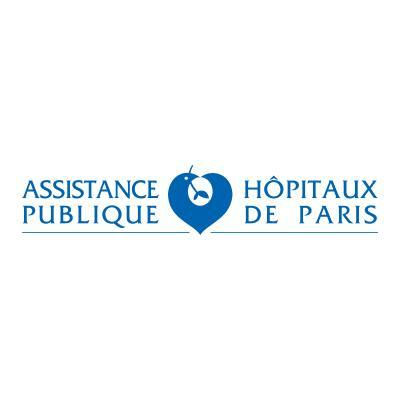Request Demo
Last update 08 May 2025
Childhood asthma
Last update 08 May 2025
Basic Info
Synonyms ASTHMA CHILDHOOD, Asthma in Children, Asthma in children + [13] |
Introduction <h3>What is asthma? </h3> <p><a href="https://medlineplus.gov/asthma.html">Asthma</a> is a chronic (long-term) lung disease. It affects your airways, the tubes that carry air in and out of your lungs. When you have asthma, your airways can become inflamed and narrowed. This can cause wheezing, <a href="https://medlineplus.gov/cough.html">coughing</a>, and tightness in your chest. When these symptoms get worse than usual, it is called an asthma attack or flare-up.</p> <h3>How does asthma affect children? </h3> <p>Asthma often starts during childhood, usually before age 5. Many children have asthma - it is the most common chronic disease of childhood. It can cause children to miss school and end up in the hospital. But treatments can help manage asthma.</p> <h3>What causes asthma in children?</h3> <p>The exact cause of asthma is unknown. Genetics and environment likely play a role in which children get asthma.</p> <p>An asthma attack can happen when your child is exposed to an asthma trigger. An asthma trigger is something that can set off or worsen asthma symptoms. Different triggers can cause different types of asthma:</p><ul> <li>Allergic asthma is caused by allergens. Allergens are substances that cause an allergic reaction. They can include <ul> <li>Dust mites</li> <li><a href="https://medlineplus.gov/molds.html">Mold</a></li> <li>Pets</li> <li>Pollen from grass, trees, and weeds</li> <li>Waste from pests such as cockroaches and mice</li> </ul> </li> <li>Nonallergic asthma is caused by triggers that are not allergens, such as <ul> <li>Breathing in cold air</li> <li>Certain medicines</li> <li><a href="https://medlineplus.gov/householdproducts.html">Household chemicals</a></li> <li>Infections such as <a href="https://medlineplus.gov/commoncold.html">colds</a> and the <a href="https://medlineplus.gov/flu.html">flu</a></li> <li><a href="https://medlineplus.gov/airpollution.html">Outdoor air pollution</a></li> <li><a href="https://medlineplus.gov/secondhandsmoke.html">Tobacco smoke</a></li> </ul> </li> <li>Exercise-induced asthma happens during physical exercise, especially when the air is dry</li> </ul> <p>Asthma triggers may be different for each child and can change over time.</p> <h3>Which children are at risk for asthma?</h3> <p>Certain factors raise the risk of asthma in children:</p><ul> <li><strong>Being exposed to secondhand smoke</strong> when their mother is pregnant with them or when they are small children</li> <li><strong>Genetics and family history.</strong> Children are more likely to have asthma if one of their parents has it, especially if it's the mother. </li> <li><strong>Race or ethnicity.</strong> Black and African Americans and Puerto Ricans are at higher risk of asthma than people of other races or ethnicities.</li> <li><strong>Having other diseases or conditions</strong> such as <a href="https://medlineplus.gov/obesity.html">obesity</a> and <a href="https://medlineplus.gov/allergy.html">allergies</a></li> <li><strong>Often having viral respiratory infections</strong> as young children</li> <li><strong>Sex.</strong> In children, asthma is more common in boys. In teens, it is more common in girls.</li> </ul> <h3>What are the symptoms of asthma in children?</h3> <p>The symptoms of asthma in children include:</p><ul> <li>Chest tightness</li> <li>Coughing, especially at night or early morning</li> <li><a href="https://medlineplus.gov/breathingproblems.html">Breathing problems</a>, such as shortness of breath, rapid breathing, or gasping for air</li> <li><a href="https://medlineplus.gov/fatigue.html">Feeling tired</a></li> <li>Dark circles under the eyes</li> <li>Being irritable</li> <li>Wheezing, which causes a whistling sound when they breathe out</li> <li>Trouble eating or sucking (in infants)</li> </ul> <p>These symptoms can range from mild to severe. They may happen often or only once in a while.</p> <p>When children have an asthma attack, their symptoms get much worse. The attacks may come on gradually or suddenly. Sometimes they can be life-threatening. Warning signs of a severe attack include severe coughing, serious breathing problems, and turning very pale or blue in the face, lips and/or fingernails. If your child has those symptoms, get medical help right away.</p> <h3>How is asthma in children diagnosed?</h3> <p>It can be hard to diagnose asthma in children, especially if they are young. Asthma has similar symptoms as other childhood conditions. And some children may not have asthma symptoms very often, so it may seem like they are having respiratory infections instead.</p> <p>Your child's health care provider may use many tools to diagnose asthma:</p><ul> <li>Physical exam</li> <li>Medical history</li> <li>Chest <a href="https://medlineplus.gov/xrays.html">x-ray</a></li> <li><a href="https://medlineplus.gov/lab-tests/lung-function-tests/">Lung function tests</a>, including spirometry, to test how well the lungs work. Younger children are usually not able to do these tests.</li> <li>Allergy <a href="https://medlineplus.gov/lab-tests/allergy-skin-test/">skin</a> or <a href="https://medlineplus.gov/lab-tests/allergy-blood-test/">blood</a> tests, if you have a history of allergies. These tests check which allergens cause a reaction from your immune system.</li> </ul> <p>If you have a young child who cannot do lung function tests, the provider may suggest doing a trial of asthma medicines. The trial involves giving your child the medicines for several weeks to see whether the symptoms get better.</p> <h3>What are the treatments for asthma in children?</h3> <p>If your child has asthma, you will work with their health care provider to create a treatment plan. The plan will include ways to manage your child's asthma symptoms and prevent asthma attacks, such as:</p><ul> <li><strong>Strategies to avoid triggers.</strong> For example, if tobacco smoke is a trigger for your child, you should not allow anyone to smoke in your home or car.</li> <li><strong>Short-term relief medicines,</strong> also called quick-relief medicines. They help prevent symptoms or relieve symptoms during an asthma attack. They include an inhaler to have for your child at all times. It may also include other types of medicines which work quickly to help open your child's airways.</li> <li><strong>Control medicines.</strong> They work by reducing airway inflammation and preventing narrowing of the airways. Not all children will take control medicines. Whether or not your child needs them depends on how severe the asthma is and how often your child has symptoms.</li> </ul> <p>If your child has a severe attack and the short-term relief medicines do not work, get medical help right away.</p> <p>Your child's provider may adjust the treatment until the asthma symptoms are controlled.</p> |
Analysis
Perform a panoramic analysis of this field.
login
or

AI Agents Built for Biopharma Breakthroughs
Accelerate discovery. Empower decisions. Transform outcomes.
Get started for free today!
Accelerate Strategic R&D decision making with Synapse, PatSnap’s AI-powered Connected Innovation Intelligence Platform Built for Life Sciences Professionals.
Start your data trial now!
Synapse data is also accessible to external entities via APIs or data packages. Empower better decisions with the latest in pharmaceutical intelligence.
Bio
Bio Sequences Search & Analysis
Sign up for free
Chemical
Chemical Structures Search & Analysis
Sign up for free





